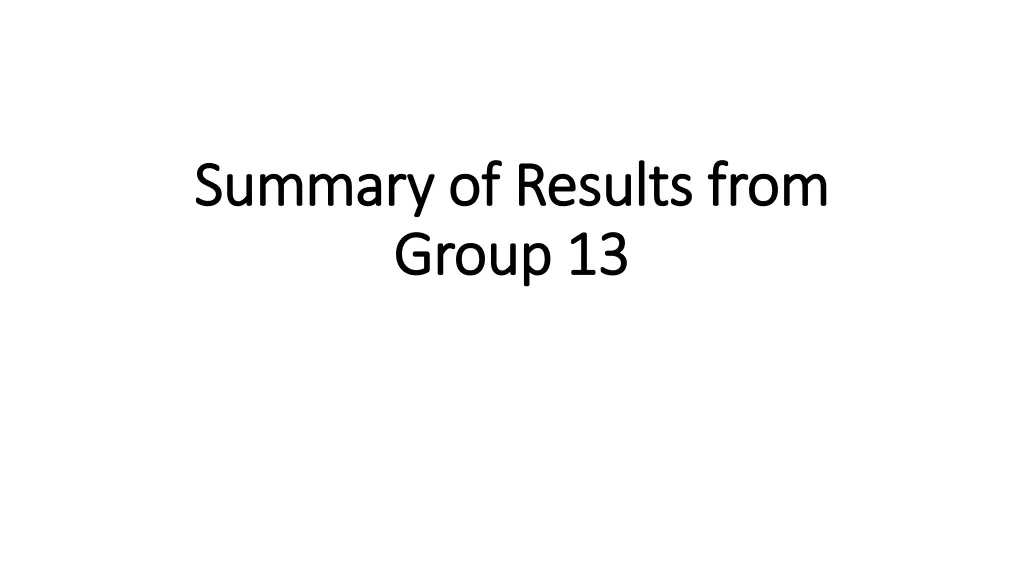
Microbiome Analysis of Bacterial Diversity in Group 13 Results
Explore the detailed results of Group 13's microbiome analysis, including PCR gel electrophoresis, DNA sample evaluation, Bacillus species identification, and bacterial quantity representation. Discover the impact of location on microbiomes in this comprehensive study.
Download Presentation

Please find below an Image/Link to download the presentation.
The content on the website is provided AS IS for your information and personal use only. It may not be sold, licensed, or shared on other websites without obtaining consent from the author. If you encounter any issues during the download, it is possible that the publisher has removed the file from their server.
You are allowed to download the files provided on this website for personal or commercial use, subject to the condition that they are used lawfully. All files are the property of their respective owners.
The content on the website is provided AS IS for your information and personal use only. It may not be sold, licensed, or shared on other websites without obtaining consent from the author.
E N D
Presentation Transcript
Summary Summary o of f R Results G Group roup 13 esults from 13 from
GROUP 13 Stepan Vlach Czechia Paula Garcia Ortega Spain Aniekaa Goyal India
PCR PCR Result Result Gel Gel Electrophoresis Electrophoresis OBSERVATION: We see a band on approximately 1500 basepairs. GROUP 13 EVALUATION: The 16S gene was amplified. CONCLUSION: The PCR was successful because the band at 1500 bp indicates the presence of the 16S rRNA gene.
Evaluation Evaluation by Epi2ME by Epi2ME OBSERVATION: The system read our DNAsample. EVALUATION: The average read length of our sample is 1494.9, our median is 1608.0 with our minimum read length being 814 and the maximum read length being 1951. CONCLUSION: We can continue with investigating the species of bacteria.
Evaluation by Epi2ME Evaluation by Epi2ME OBSERVATION: We identified the bacteria Bacillus species most predominantly. EVALUATION: 662 microbes of Bacillus subtilis, 50 microbes of Bacillus rugosus, 10 microbes of Bacillus cabrialesii, 10 microbes of Bacillus stercoris. CONCLUSION: We conclude that our sample was taken from the soil or the gastrointestinal tract of cattle or human beings. Our sample was sourced from the right-hand thumb of Indian students before coming to Germany.
Top Top R Represented epresented B Bacteria acteria Quantity n Order Name 1. Bacillus subtilis 662 2. Bacillus rugosus 50 3. Bacillus cabrialesii 10 4. Bacillus stercoris 10
Comparison Comparison of of F Finger inger M Microbiomes icrobiomes D Depending epending on on L Location ocation BEFORE AFTER Quantity n quantity % or n Order Name order name 1. Bacillus subtilis 662 1. 2. Bacillus rugosus 50 2. 3. Bacillus cabrialesii 10 3. 4. Bacillus stercoris 10 4. 5.
Thank Thank you you for for your your attention attention! !
